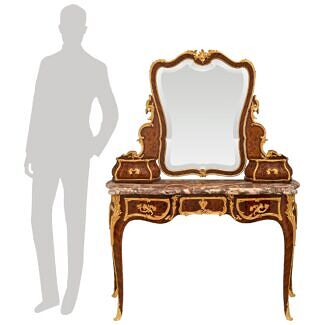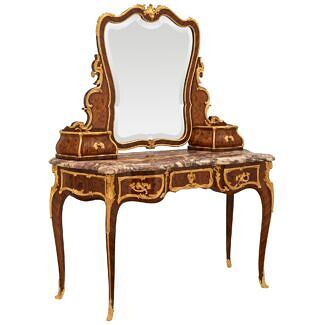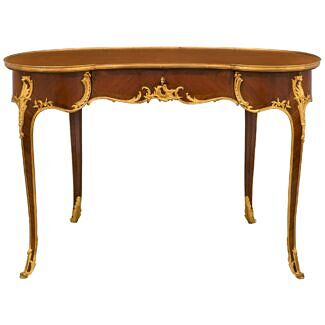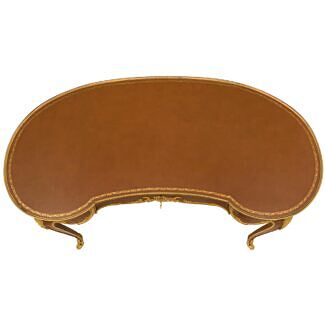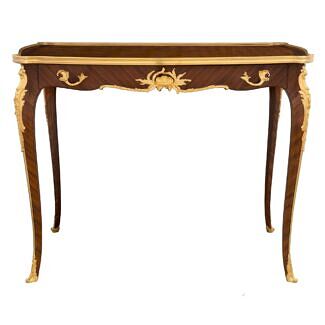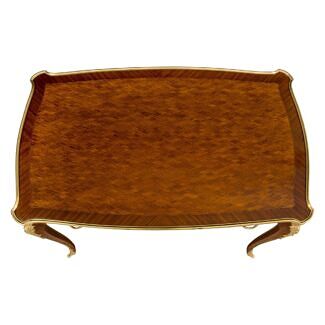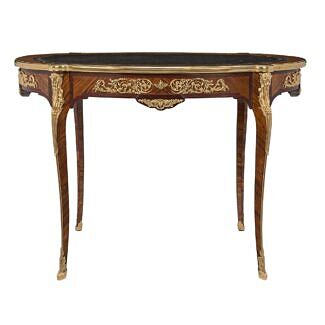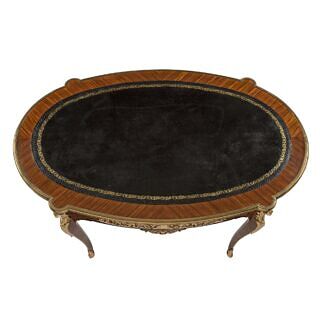A French 19th century Belle Epoque Period Louis XV st. Kingwood, Tulipwood and Ormolu center table, in the manner of Francois Linke
List: $33,500.00
A truly magnificent French 19th century Belle Epoque Period Louis XV st. Kingwood, Tulipwood and Ormolu center table, in the manner of Francois Linke. This exceptional table is raised on cabriole legs with impressive and richly chased Ormolu sabots and... — Read More
A truly magnificent French 19th century Belle Epoque Period Louis XV st. Kingwood, Tulipwood and Ormolu center table, in the manner of Francois Linke. This exceptional table is raised on cabriole legs with impressive and richly chased Ormolu sabots and chutes leading up to intricate corner mounts and a fine trim around each leg's contours. An Ormolu trimmed cabriole stretcher links all four legs and is centered by a superbly detailed Ormolu Cupid. The scalloped apron is decorated at the bottom by the same foliate trim which decorates the legs, with the addition of foliate reserves, and conceals a central drawer on the front and back. Above is the stunning Kingwood and Tulipwood parquetry top surrounded by a Kingwood and Ormolu border. — Read Less
- Item # 14250
-
H: 31.75 in L: 48.5 in D: 28.25 in
H: 81 cm L: 123 cm D: 72 cm
- France
- 19th Century
- Kingwood, Ormolu, Tulipwood
- Belle Époque Period Read More, Louis XV st. Read More
- François Linke Read More
Related products
-
# 13520 - H: 60" L: 47" D: 19"
-
# 7479 - H: 29" L: 43" D: 27"
-
# 10996 - H: 29" L: 36" D: 22"
-
# 8483 - H: 29" L: 44" D: 27"


























